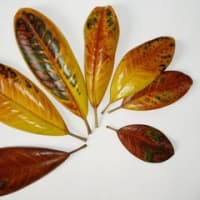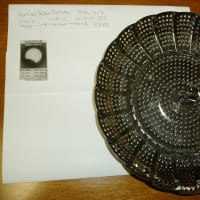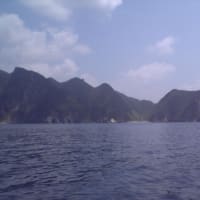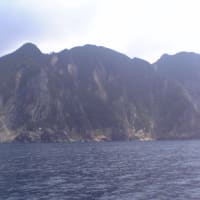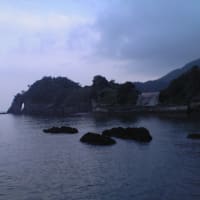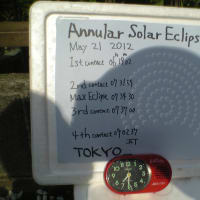第3部 自然のあり方とやり口 第15章 虹の向こう側 にドップラー効果の話が出てくる。
wiki/Christian Andreas Doppler (29 November 1803 – 17 March 1853)
was an Austrian mathematician and physicist.
○○さんも負ける驚異のなで肩!
タイソン博士によると、“1845年までにドップラーは、平台貨車に乗った演奏家たちに楽器で音を出してもらい、それを絶対音感を持った人々に聞いてもらって、列車が接近し、その後遠ざかるあいだに聞いた音がどのように変化したかを書きとめてもらうという実験を何度も行っている。”そうだ。
もう少し具体的な記述がないかと思って捜してみた。楽器は何だったのだろ?とかも知りたい。
実験したのはドップラー自身だと書いてある資料が見当たらず、オランダ人の化学者・気象学者ボイス・バロットだというじゃないの。
クリストフ・ボイス・バロットの実験: wiki/クリスチャン・ドップラー
「列車に乗ったトランペット奏者がGの音を吹き続け、それを絶対音感を持った音楽家が聞いて」との記載だ。同人に関する英語ページには実験法の具体的記載はないな。
http://scienceworld.wolfram.com/biography/Buys-Ballot.html
He put a group of musicians on a train and took up his position on a station platform. He asked the train driver to rush past him as fast as he could while the musicians played and held a constant note, and was able to detect the Doppler shift (as a change in pitch) as the train passed him (Filkin and Hawking 1997, p. 65).
演奏者は複数(何人以上かな)、ボイス・バロット自身が駅で確認したとの記述だな。
"From Stargazers to Starships" by David P. Sternより
nasa/The Doppler Effect
That was the time of the first railroads, and Buys Ballot arranged for a horn player to play a steady note as he passed a trained musician on the ground, who estimated the drop of the tone heard by him. The speed of the train was also measured, so that the predicted change could be tested. The whistles of today's fast trains, of course, produce a very notable drop in pitch as they pass the listener.
一人の男性ラッパ奏者、聞き手は訓練された一人の男性音楽家だとさ。
うーん、どんどん迷宮にはまっていく。
ドップラー自身が実験をしていないとは考えられないのだが、公式に認められているのはボイス・バロットの実験だということなのかな。
故スティーヴン・ジェイ・グールド博士(タイソン博士も謝辞で最大の敬意を払っている)のエッセイに、「ナチュラル・サイエンス」誌の読者はレベルが高くて、いい加減なことでも書こうものならすぐに手紙が来る(というようなことが何処かに書いてあったような気がする…)そうだから、実験に関するタイソン博士の記述も、しっかり確認したうえでのことだと思う。
誰かさんのようにネット上でふらふら捜しただけではなく、ね(笑)。
でも楽器が具体的に書いていないのは不満だな。誰でも知りたくなるではないか。
演奏者が複数で楽器は不明という資料が、確認できた最も確かなものだったのかな。
(この話は終わり)さらに別の話題につづく
wiki/Christian Andreas Doppler (29 November 1803 – 17 March 1853)
was an Austrian mathematician and physicist.
○○さんも負ける驚異のなで肩!
タイソン博士によると、“1845年までにドップラーは、平台貨車に乗った演奏家たちに楽器で音を出してもらい、それを絶対音感を持った人々に聞いてもらって、列車が接近し、その後遠ざかるあいだに聞いた音がどのように変化したかを書きとめてもらうという実験を何度も行っている。”そうだ。
もう少し具体的な記述がないかと思って捜してみた。楽器は何だったのだろ?とかも知りたい。
実験したのはドップラー自身だと書いてある資料が見当たらず、オランダ人の化学者・気象学者ボイス・バロットだというじゃないの。
クリストフ・ボイス・バロットの実験: wiki/クリスチャン・ドップラー
「列車に乗ったトランペット奏者がGの音を吹き続け、それを絶対音感を持った音楽家が聞いて」との記載だ。同人に関する英語ページには実験法の具体的記載はないな。
http://scienceworld.wolfram.com/biography/Buys-Ballot.html
He put a group of musicians on a train and took up his position on a station platform. He asked the train driver to rush past him as fast as he could while the musicians played and held a constant note, and was able to detect the Doppler shift (as a change in pitch) as the train passed him (Filkin and Hawking 1997, p. 65).
演奏者は複数(何人以上かな)、ボイス・バロット自身が駅で確認したとの記述だな。
"From Stargazers to Starships" by David P. Sternより
nasa/The Doppler Effect
That was the time of the first railroads, and Buys Ballot arranged for a horn player to play a steady note as he passed a trained musician on the ground, who estimated the drop of the tone heard by him. The speed of the train was also measured, so that the predicted change could be tested. The whistles of today's fast trains, of course, produce a very notable drop in pitch as they pass the listener.
一人の男性ラッパ奏者、聞き手は訓練された一人の男性音楽家だとさ。
うーん、どんどん迷宮にはまっていく。
ドップラー自身が実験をしていないとは考えられないのだが、公式に認められているのはボイス・バロットの実験だということなのかな。
故スティーヴン・ジェイ・グールド博士(タイソン博士も謝辞で最大の敬意を払っている)のエッセイに、「ナチュラル・サイエンス」誌の読者はレベルが高くて、いい加減なことでも書こうものならすぐに手紙が来る(というようなことが何処かに書いてあったような気がする…)そうだから、実験に関するタイソン博士の記述も、しっかり確認したうえでのことだと思う。
誰かさんのようにネット上でふらふら捜しただけではなく、ね(笑)。
でも楽器が具体的に書いていないのは不満だな。誰でも知りたくなるではないか。
演奏者が複数で楽器は不明という資料が、確認できた最も確かなものだったのかな。
(この話は終わり)さらに別の話題につづく










